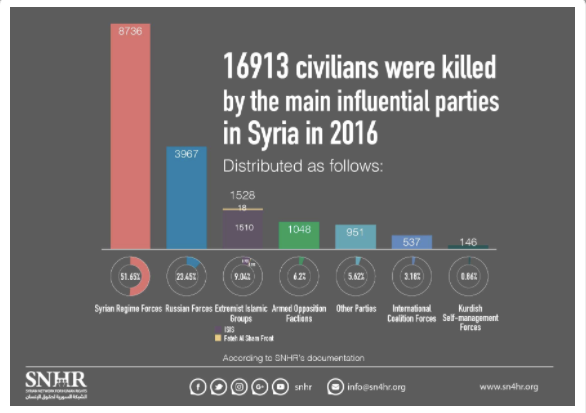In his first week in office, President Donald Trump seems intent on fulfilling his campaign promises regarding immigration and refugees. President Trump signed an executive order calling for a wall on the Mexican border, and a draft executive order is also apparently awaiting his signature that would halt immigration and resettlement of refugees from certain Muslim majority countries. My colleagues Kristie De Peña and Matthew La Corte have already explained why the refugee ban is both counterproductive and morally obtuse. However, the Trump administration seems to want to compound the problems caused by its refugee ban through greater military involvement in Syria.
Section six of the draft executive order (available here) calls for “Establishment of Safe Zones to Protect Vulnerable Syrian Populations.” The language of the order directs the departments of State and Defense to produce plans within ninety days for “safe areas in Syria and the surrounding region in which Syrian nationals displaced from their homeland can await firm settlement, such as repatriation or potential third-party resettlement.” And as Reuters notes, in the president’s interview with ABC News on Wednesday night, Trump said, “I’ll absolutely do safe zones in Syria for the people,” but provided no details on how they would work.
There are several problems with this proposal. Not the least of which, as another colleague, Joshua Hampson, has explained, is the greater potential for radicalization in such areas. However, Joshua’s post touches on an additional problem that deserves further discussion. He writes,
First of all, despite their name, “safe zones” are also not necessarily safe. Without proper protection, they can actually be easy targets.
The Bosnian town of Srebrenica is a prime example of this. Declared a safe zone for Bosnian Muslims, it was nevertheless overrun by Bosnian Serbs who systematically killed 8,000 Muslim men and boys.
A safe zone established in Syria would therefore require U.S. protection. This would mean both instituting a no-fly zone, and establishing ground troops to protect the zones from ISIS and Syrian government soldiers. This would be a major intervention, and would likely require direct conflict with Syrian troops and by extension, Syria’s ally Russia.
Joshua is right to highlight that the potential for conflict with Syrian and Russian forces is an important issue, but the issue needs to be explored further. For instance, it assumes President Trump sees Syria and Russia as the forces from whom Syrian civilians need to be kept safe. If he did, he would of course be right. According to data from the Syrian Network for Human Rights, 16,913 civilians were killed in the conflict last year. And as the graphic below shows, they estimate that Assad regime and Russian forces were responsible for seventy-five percent of those deaths.
If President Trump is operating with these figures in mind, establishing safe zones protected by American military personnel—with American aircraft likely patrolling a no-fly zone as well—would risk confrontation with Syrian and Russian forces that could quickly escalate into a far worse conflict.
However, President Trump suggested multiple times throughout the 2016 campaign that he does not see the Assad regime or its Russian patron as the problem in Syria. He went so far as proposing a counterterrorism partnership with Russia and suggested he would lift sanctions on Moscow in return for its agreement to do so. Has the president changed his mind about who is most responsible for the atrocities being committed in Syria? Or does he conceive of these safe zones as complementary to cooperation with Moscow and Damascus against Islamist groups in the country (who, while racking up smaller body counts than the Syrian and Russian militaries, are also responsible for many civilian deaths)?
Whatever the answers to these questions, the proposal for safe zones, in conjunction with a ban on refugees, represents the worst of all worlds for dealing with the humanitarian crisis in Syria. If Trump does conceive of the safe zones as a way to protect civilians against the most pressing threat to their lives—Russian and Syrian government forces—then he is risking escalation against those militaries in the process. If the administration conceives of these safe zones as protecting civilians against the type of Islamist forces Trump said he will cooperate with Moscow and Damascus to combat, he gives those most responsible for civilian deaths in the country a much freer hand to wreak havoc on Syrian civilians. At best, these safe zones would put American military personnel in harm’s way without providing protection against the biggest threat to the lives of the Syrian people. At worst, it risks military confrontation and escalation with a nuclear-armed power.
And in either case, large numbers of displaced persons would still be confined to what are more-or-less still refugee camps—with the lack of resources, poor living conditions, social instability, and greater potential for radicalization they entail. The Trump administration would also choose to do so by rejecting both the chance for these people to find a better life in the United States, as well as America’s highest ideals.
